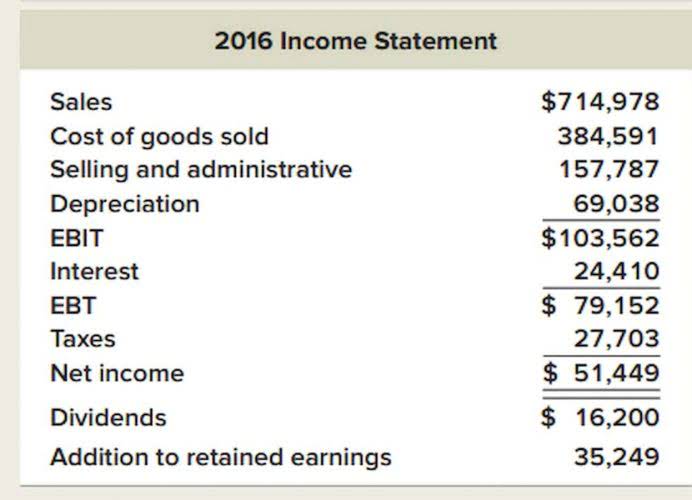What Changes in Working Capital Impact Cash Flow?

Generally, companies like Walmart, which have to maintain a large inventory, have negative working capital. If a company’s change in NWC has increased year-over-year (YoY), this implies that either its operating assets have grown and/or its operating liabilities have declined from the preceding period. Then we need to total the current assets and also the current liabilities. And then, we need to find the difference between the current assets and the current liabilities as per the net working capital equation. If your working capital ratio is one, meaning your cash inflows will cover your cash outflows, then that’s good, right?
- Liabilities are things you owe, like payments to your vendors or lenders.
- Cash flow is the net amount of cash and cash-equivalents being transferred in and out of a company.
- As indicated, net working capital simply represents the ratio between a business’s current assets and its current liabilities.
- This increase in working assets is permanent so it won’t be settled in cash in the next year.
- To calculate change in working capital, you first subtract the company’s current liabilities from the company’s current assets to get current working capital.
A data-driven approach to improving net working capital

Changes in working capital are often used by investors and lenders to assess the health and value of a business. Read on to learn what causes a change in working capital, how to to calculate changes in working capital, and what these changes can tell you about your business. It’s worth noting that while negative working capital isn’t always bad and can depend on the specific business and its lifecycle stage, prolonged negative working capital can be problematic.

Is Negative Working Capital Bad?
- Positive NWC shows that a company has the financial resources to pay its current obligations with its short-term liquidity.
- Companies that take analytics seriously set up their data infrastructure—and the organization around it—in a way that allows them to easily consolidate the information.
- The change in NWC comes out to a positive $15mm YoY, which means the company retains more cash in its operations each year.
- From shifts in market demand to variations in supplier terms, various internal and external factors can influence working capital dynamics.
- Lenders will often look at changes in working capital when assessing a company’s management style and operational efficiency.
- The net working capital ratio formula is $600,000 of current assets divided the $350,000 of current liabilities for a working capital ratio of 1.71.
- A ratio above two may mean you can invest cash in your business, pay down debt, or distribute it to owners.
To calculate the change in net working capital (NWC), the current period NWC balance is subtracted from the prior period NWC balance. If the change in NWC is positive, the company collects and holds onto cash earlier. However, if the change in NWC is negative, the business model of the company might require spending cash before it can sell and deliver its products or services. Companies that take analytics seriously set up their data infrastructure—and the organization around it—in a way that allows them to easily consolidate the information.
Definition of the working capital ratio formula

If a transaction increases current assets and current liabilities by the same amount, there would be no change in working capital. Working capital is a basic accounting formula (current assets minus current liabilities) business owners use to determine their short-term financial health. Changes in working capital can occur https://www.instagram.com/bookstime_inc when either current assets or current liabilities increase or decrease in value.
- So, the first step for calculating the changes in NWC is the calculation of the Current assets of the current year and previous year (2020 and 2019).
- As a general rule, the more current assets a company has on its balance sheet relative to its current liabilities, the lower its liquidity risk (and the better off it’ll be).
- That’s why it’s used by lenders to determine whether you are financially healthy enough to receive a loan.
- The change in working capital formula is straightforward once you know your balance sheet.
- This could include expanding product lines, entering new markets, or upgrading equipment.
- It shows how efficiently a company manages its short-term resources to meet its operational needs.
- Positive working capital is when a company has more current assets than current liabilities, meaning that the company can fully cover its short-term liabilities as they come due in the next 12 months.
Understanding Cash Flow Forecasting Methods: Short Term Vs. Long Term
As for accounts payables (A/P), delayed payments to suppliers and vendors likely caused the increase. The net effect is that more customers have paid using credit as the form of payment, rather than cash, which reduces the liquidity (i.e. cash on hand) of the company. On that note, one other way to boost NWC is by selling long-term assets for cash. Of course, depending on long-term business goals, this may not be advisable. It’s worth noting that if you make a major financial decision, such as taking out a loan or a lease for equipment, your NWC will be impacted in the near term. https://www.bookstime.com/ You can get a clearer picture of the financial trends of your business over time by assessing changes in NWC, which can be useful when making business decisions.
Refinance Into Longer-term Debt
- By submitting this form, you consent to receive email from Wall Street Prep and agree to our terms of use and privacy policy.
- A permanent increase in your working capital is like buying any other long-term asset like buildings and equipment.
- Different companies may have different level of liquidity requirements, depending on the type of industry, business model, products and services manufactured etc.
- A business has negative working capital when it currently has more liabilities than assets.
- This means the company retains more cash in its operations each year.
- Working capital is a company’s current assets minus its current liabilities.
Working capital represents the difference between a firm’s current assets and current liabilities. Working capital, also called net working capital, is the amount of money a company has available to pay its short-term expenses. On the other hand, examples of operating current liabilities include obligations due within one year, such as accounts payable (A/P) and accrued expenses (e.g. accrued wages). The most common examples of operating current assets include accounts receivable (A/R), inventory, and prepaid expenses. A company’s current assets are sufficient to meet business needs.

![]()
While A/R and inventory are frequently considered to be highly liquid assets to creditors, uncollectible A/R will NOT be converted into cash. In addition, the liquidated value of inventory is specific to the situation, i.e. the collateral value can vary substantially. Therefore, the impact on the company’s free cash flow (FCF) is +$2 million across both periods. Since we’re measuring the increase (or decrease) in free cash flow, i.e. across two periods, the “Change in Net Working increase in net working capital Capital” is the right metric to calculate here. A company’s growth rate can affect its change in net working capital requirements. As the company grows, it may need to invest more in its working capital to support increased production or inventory levels, resulting in a higher net working capital requirement.
